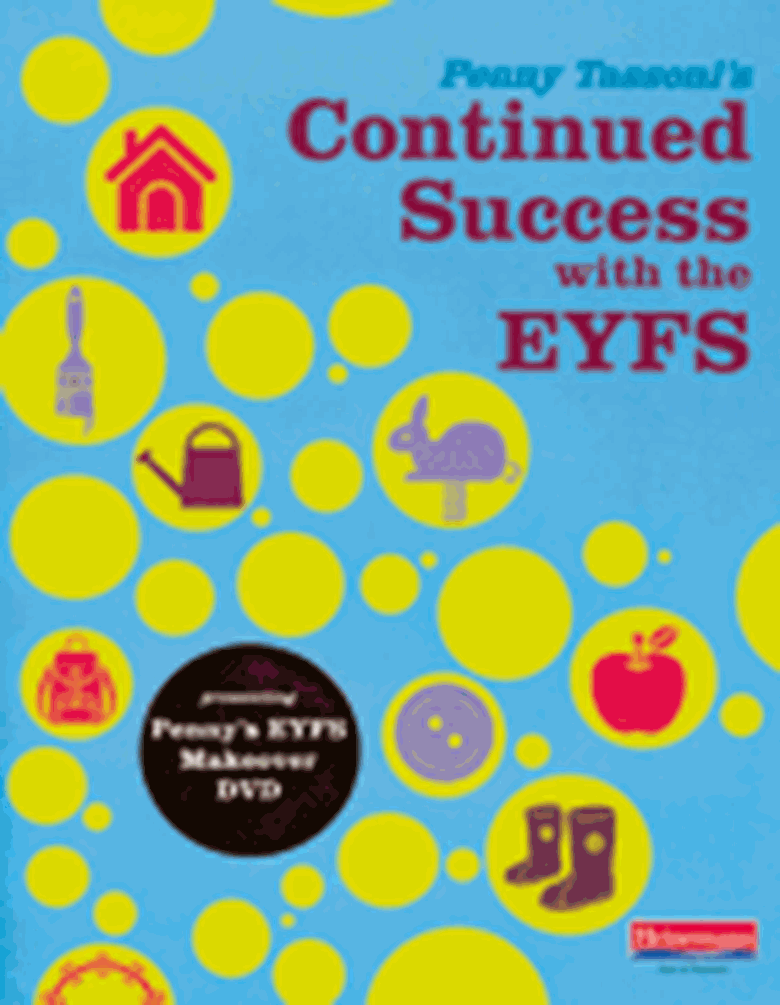Learning & Development: Best Practice - Follow me
Penny Tassoni
Tuesday, March 8, 2011
The writing's on the wall with a simple, fun game from a new book by Penny Tassoni helping children to develop their numbers and letters.

Children love painting. This is a game that you can use on the painting wall to help children learn about number and shape as well as handwriting.
AGE 3+
RESOURCES
- - small trays that children can hold
- - primary coloured and white ready-mixed paint
- - brushes - roll of paper
- - masking tape - aprons
(Health and safety note: Keep an eye out for children 'colliding')
ACTIVITY
Prepare a painting wall or cover a long table with paper. To begin with, this activity is worth doing with one or two children until they understand the game. Pick up a brush and tray and paint a circle on the wall (aim to do this anti-clockwise, starting at the top, as this is the basis of many lower case letters). Ask a child to put a circle outside of yours. Move along the wall and repeat. Think about painting small circles and large circles. Put some up, high others down low.
Swap over so that the child becomes the leader. If more than one child plays, they will add a further circle to each circle. If you have created a painting wall, several children can play at the same time in pairs.
You can repeat this game using other positional instructions - for example, 'put a circle inside mine' or 'above it'.
NEXT STEPS
Observation points
- - How engaged is the child in this activity?
- - How easily does the child make their circle?
- - Does the child use an anti-clockwise rotational movement starting at the top?
- - Does the child enjoy being the leader?
- - Is the child able to follow instructions?
- - How much language does the child use?
- - Does the child enjoy mixing the colours?
How can we take this outdoors?
Think about putting a painting wall outdoors or do the activity using paintbrushes and water on the ground or a wall.
How can we vary/build on this activity?
There are plenty of ways in which this activity can be built upon.
- - Turn it into a roll-a-dice game - the number on the dice indicates how many circles have to be painted.
- - Use sponges and make patterns of different colours for children to copy.
- - Paint a vertical line and see if children can put a line the same length or longer than yours.
- - Use a brush to make wavy lines.
How can this activity become a child-initiated activity?
Encourage children to use the paints and materials independently. If a roll-a-dice game is used, remember to put out dice.
About the book
Building on her earlier Practical EYFS Handbook, Penny Tassoni's Continued Success with the EYFS (Heinemann, £21.99) is another great resource to support practitioners with some of the challenges of delivering the EYFS. Key themes explored include: routines; observation and planning; child-initiated play; outdoor play; the outdoor environment; key person role; problem solving. Penny's ideas are brought to life in an accompanying 30-minute DVD, in which three settings make small but significant changes resulting in a wealth of difference to the quality of their provision.
READER OFFER - We have ten copies of Penny Tassoni's Continued Success with the EYFS (Heinemann, £21.99) to give away to Nursery World readers. E-mail your entry to letter.nw@haymarket.com or send your name and address on the back of a postcard or envelope to Nursery World, 174 Hammersmith Road, London W6 7JP. Mark all entries 'Penny Tassoni'. Winners will be the first ten names drawn on 24 March.
LINKS TO THE EYFS
This activity is particularly good at encouraging children to have fun
while thinking about shapes and space, as well as helping them to learn
key handwriting movements. For children to benefit, you must draw their
attention to the colours that they are using and the sizes of the
circles that they are drawing. Remember to count circles as well.
Personal, social and emotional development
Dispositions and attitudes; self-confidence and self-esteem self-control
Behaviour and self-control
Communication, Language and Literacy
Language for communication; language for thinking
Handwriting
Problem solving, reasoning and numeracy
Numbers as labels and for counting; calculating
Shape, space and measures
Knowledge and understanding of the world
Exploration and investigation
Physical development
Movement and space; health and bodily awareness
Using equipment and materials
Creative development
Being creative - responding to experiences, expressing and communicating ideas
Exploring media and materials




